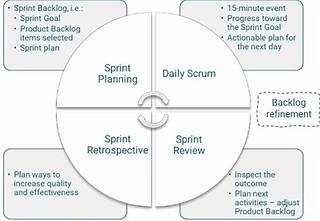PSPO-I Online Practice Questions and Answers
Who is on the Scrum Team?
(choose all that apply)
A. Scrum Master.
B. Product Owner.
C. Developers.
D. Project Manager.
E. None of the above.
The Product Owner is the person who will be held accountable if a product does not achieve its goals or deliver value. Does this mean that the Product Owner has final say over the Definition of Done?
(choose the best answer)
A. Yes, the Product Owner decides the Definition of Done. The Developers may be consulted.
B. No, the Scrum Team decides the Definition of Done, if it is not a standard of the organization. The Product Owner is just one member of the Scrum Team.
Which of the following are criteria to order Product Backlog items?
(choose all that apply)
A. Value of Product Backlog items.
B. Dependencies between Product Backlog items.
C. Dependencies to other products.
D. The availability of the Scrum Master.
E. All of the above.
What three things might a Scrum Product Owner focus on to ensure the product delivers value?
(choose the best three answers)
A. How much of the functionality of the product is being used.
B. Direct customer feedback.
C. How quickly or easily the product can be absorbed and used by its customers.
D. Velocity is increasing over time.
E. Minimizing changes to project scope.
A Scrum Team has been working on a product for 9 Sprints. A new Product Owner who is new to Scrum joins the team and understands she is accountable for the Product Backlog. However, she is unsure about the purpose of the Product Backlog. She has read that the Product Backlog should be a list of all user features for the product. She goes to the Scrum Master asking where to put the other types of requirements that are going to be taken into account. Are all of the following types of requirements acceptable on a Product Backlog?
Stability requirements Performance requirements Product Functionality Documentation Fixes
(choose the best answer)
A. Yes, they all belong on the Product Backlog. The Product Backlog is supposed to be the "single source of truth" for all the work for the product.
B. No. Product Backlog is a tool for the Product Owner. The Product Owner represents the users and stakeholders. Other types of requirements should be managed separately by the Developers. They are not the Product Owner's concern.
When multiple Scrum Teams are working on the same product, should all of their Increments be integrated every Sprint?
(choose the best answer)
A. Yes, in order to accurately inspect what is done.
B. Yes, but only for Scrum Teams whose work has dependencies.
C. No, each Scrum Team stands alone.
D. No, that is far too hard and must be done in a hardening Sprint.
Which of the following might the Scrum Team discuss during a Sprint Retrospective?
(choose the best answer)
A. Methods of communication.
B. The way the Scrum Team does Sprint Planning.
C. Skills needed to improve the Developers ability to deliver.
D. The Definition of Done.
E. All of the above.
What are two effective ways for a Scrum Team to ensure security concerns are satisfied? (choose the best two answers)
A. Add security concerns to the Definition of Done.
B. Delegate the work to the security department.
C. Have the Scrum Team create Product Backlog items for each concern.
D. Add a Sprint to specifically resolve all security concerns.
E. Postpone the work until a specialist can perform a security audit and create a list of security-related Product Backlog items.

